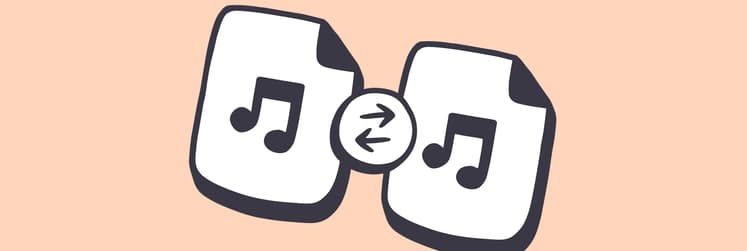The power of habit [Summary & takeaways]
Reading can take a lot of time — time that could be used to build better habits. With your busy life, it’s tough to keep up with every new book about habits, and honestly, who feels like diving into a book after a long day? I’ve put together a Charles Duhigg “Power of habit” summary, highlighting all the important points so you can get the key takeaways without the effort of reading it yourself.
“The Power of habit” book summary
You know that feeling when you have a bad habit that’s both a comfort and a total pain? The late-night ice cream, the endless scrolling through Instagram, the procrastination that somehow feels more appealing than finishing that work project. The book will help you understand the “why” behind these behaviors and give you more control and tools to kick those bad habits to the curb.

At its core, the summary of “The power of habit” revolves around the concept of the habit loop: cue, routine, and reward. Let me explain how habits work:
- Cue: This is the trigger that initiates the habit. It could be a sensation, time of day, or even an emotional nudge. For me, once that clock strikes 3 PM, it’s like a switch flips, and my mind immediately craves a sugary pick-me-up.
- Routine: This is the action we take after the cue hits. In my case, it’s zipping over to the snack table for a cookie.
- Reward: This is what we gain from the action: the pleasurable feeling of that sweet relief. But what happens if the cookie leads to a sugar crash a little later? That’s the cycle Duhigg wants us to break.
Figuring out this habit loop has been a real eye-opener. Like, that craving for something sweet at 3 PM isn’t just a weird quirk. Well, it’s a pattern I can actually change.
A quick tip before we move on: when I need to summarize anything — texts, articles, reports, or even e-books I own — I use Summarizer, a free custom GPT that creates summaries from files or links I provide. I just drop the content in, choose the summary type, and in moments, I get a clear, concise summary that saves me tons of time. Try it!
How to change your habits
How do we approach the challenge of changing habits? Charles Duhigg offers four practical and manageable steps to guide us through this process. Let’s break it down:
Step 1: Identify the habit
You need to take a close look at your current habits. Analyze if they are good, bad, or simply annoying. I recommend you reflect on your daily routines with Mental Walk. This will help you figure out which habits you want to change first. Maybe you’re not happy you drink tons of coffee daily. Or maybe you want to stop binge-watching shows when you should really be working. No judgment here. With all the sh*t happening in the world, who can resist the temptation of getting lost in another, calmer world, even if just for a little while?
Step 2: Change the cue
You know, every habit is triggered by something. It could be a specific time, an emotion, or even an action. Your mission? Figure out what that cue is for the habit you want to ditch. If you feel like grabbing some chips whenever you get bored in the late afternoon, know that you can try something different. The next time boredom hits, take a quick walk around the block.
Step 3: Alter the desire
Next up, we’re talking about changing the desire behind the habit. Think about what you’re feeling when you reach for those crunchy cookies. If you tend to grab them when you’re stressed, it might be time to change things up. What can you do instead? Try doing some quick stretches or meditating. Finding a new, healthier desire to meet that need can make all the difference.
Step 4: Change the reward
Finally, let’s talk about that sweet, sweet reward. What keeps you coming back for more? To build those new habits, you definitely need a reward that feels good, too. For example, I always go for dessert when I hit a goal. Instead, I need to plan a fun night out with friends or treat myself to a cool new book. Doing something you really enjoy can make it a lot easier to stick to your new routine.
The results? (Spoiler: It’s not a fairy tale, but it’s pretty good)
So, after my own little experiment in habit-stacking, here are my final thoughts, complete with a healthy dose of honesty.
I’ll start with good news. I did manage to change some bad habits. Hooray! Earlier, I used to treat myself to a piece of cake every day after a meal in the afternoon. Yes, when I say every day, I mean literally every day. How did I stick to a new, healthier habit? With the help of the Awesome Habits app, I tracked my progress and celebrated those little victories along the way. It made me feel accomplished each time I chose fruit over dessert. Also, I started using UpLife for mindful meditations. The app helped me carve out the mental space to really think about my cravings instead of just giving in. Note that all apps from the article are available on Setapp, a platform that hosts 250+ carefully curated Mac, iOS, and web apps for almost any task.
I won’t lie — it wasn’t all sunshine and rainbows. Some habits proved to be much more resistant to change than I anticipated. I quickly understood that while the book’s framework is powerful, it’s still not a magic wand that poops away old behaviors. Changing habits takes lots of time, dedication, and self-awareness.
There were definitely moments of frustration. Nothing seemed to stick. I still can’t handle my Instagram procrastination. Be prepared for this.
Also, what is one potential downside of the book? Sometimes, the author oversimplifies things. Yes, the habit loop is a helpful framework, but let’s be honest… Human behavior is complex. Duhigg doesn’t always consider the details of our personal situations or how outside factors can affect our habits. On top of that, the constant urge to track ourselves and optimize everything can feel a bit much at times.
All in all, “The power of habit” helped me understand what to do to change my habits. It offered tools, but I had to put in the work. Were things perfect? Not a chance. Was it hard? Heck, yes. But the results — even the messy ones — were absolutely worthwhile. At least I can proudly say I’m no longer a cake addict. Now, I just like to consider myself a “dessert enthusiast in recovery!”







